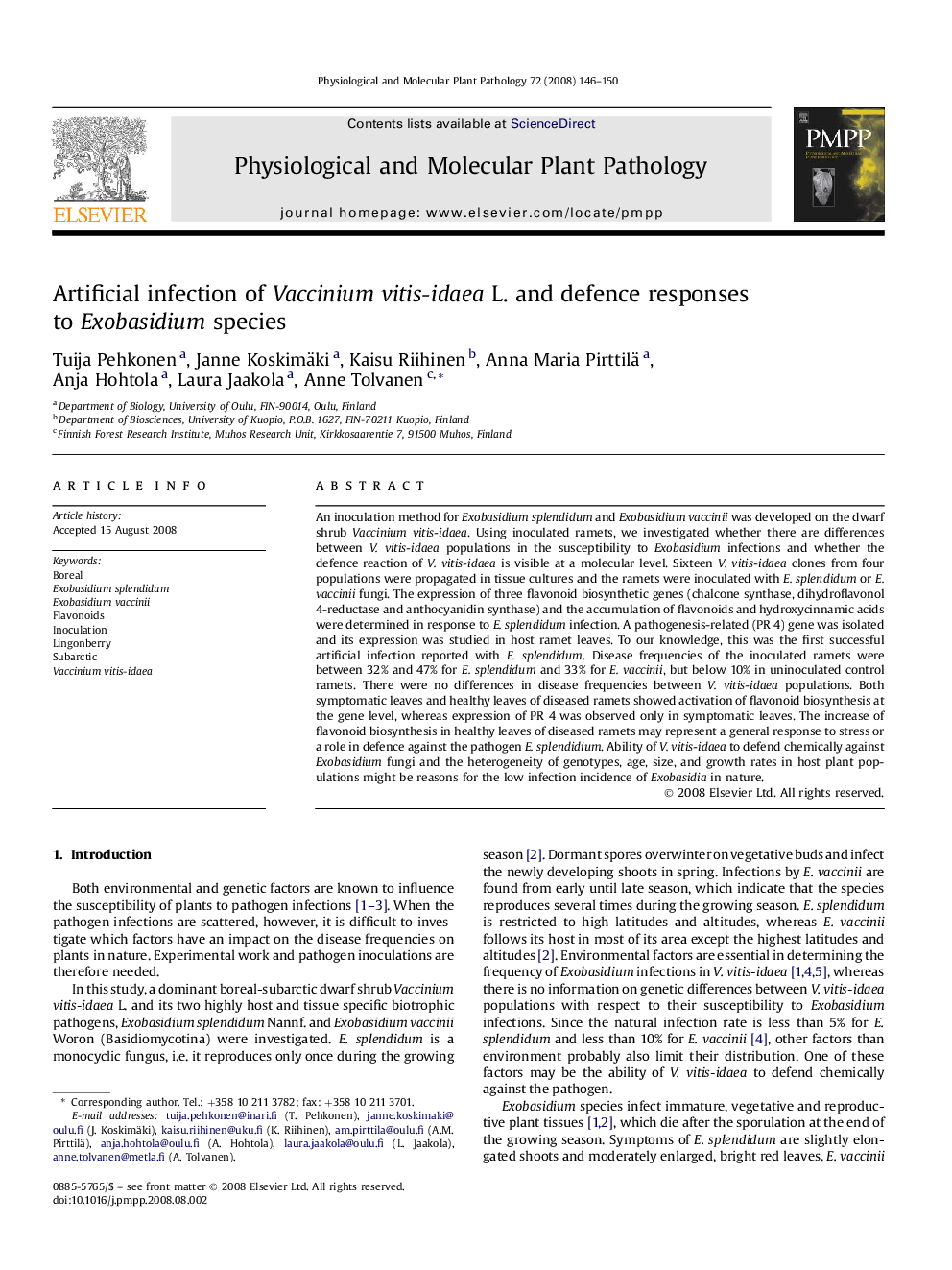| کد مقاله | کد نشریه | سال انتشار | مقاله انگلیسی | نسخه تمام متن |
|---|---|---|---|---|
| 2836681 | 1570868 | 2008 | 5 صفحه PDF | دانلود رایگان |

An inoculation method for Exobasidium splendidum and Exobasidium vaccinii was developed on the dwarf shrub Vaccinium vitis-idaea. Using inoculated ramets, we investigated whether there are differences between V. vitis-idaea populations in the susceptibility to Exobasidium infections and whether the defence reaction of V. vitis-idaea is visible at a molecular level. Sixteen V. vitis-idaea clones from four populations were propagated in tissue cultures and the ramets were inoculated with E. splendidum or E. vaccinii fungi. The expression of three flavonoid biosynthetic genes (chalcone synthase, dihydroflavonol 4-reductase and anthocyanidin synthase) and the accumulation of flavonoids and hydroxycinnamic acids were determined in response to E. splendidum infection. A pathogenesis-related (PR 4) gene was isolated and its expression was studied in host ramet leaves. To our knowledge, this was the first successful artificial infection reported with E. splendidum. Disease frequencies of the inoculated ramets were between 32% and 47% for E. splendidum and 33% for E. vaccinii, but below 10% in uninoculated control ramets. There were no differences in disease frequencies between V. vitis-idaea populations. Both symptomatic leaves and healthy leaves of diseased ramets showed activation of flavonoid biosynthesis at the gene level, whereas expression of PR 4 was observed only in symptomatic leaves. The increase of flavonoid biosynthesis in healthy leaves of diseased ramets may represent a general response to stress or a role in defence against the pathogen E. splendidium. Ability of V. vitis-idaea to defend chemically against Exobasidium fungi and the heterogeneity of genotypes, age, size, and growth rates in host plant populations might be reasons for the low infection incidence of Exobasidia in nature.
Journal: Physiological and Molecular Plant Pathology - Volume 72, Issues 4–6, July–September 2008, Pages 146–150